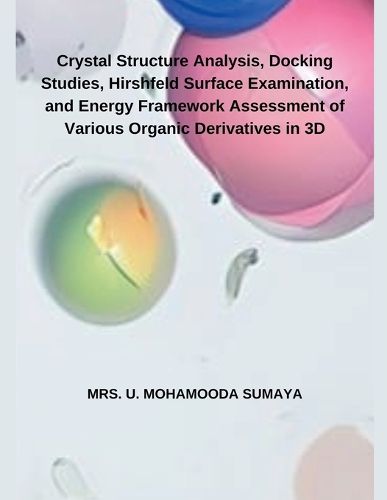Readings Newsletter
Become a Readings Member to make your shopping experience even easier.
Sign in or sign up for free!
You’re not far away from qualifying for FREE standard shipping within Australia
You’ve qualified for FREE standard shipping within Australia
The cart is loading…






This title is printed to order. This book may have been self-published. If so, we cannot guarantee the quality of the content. In the main most books will have gone through the editing process however some may not. We therefore suggest that you be aware of this before ordering this book. If in doubt check either the author or publisher’s details as we are unable to accept any returns unless they are faulty. Please contact us if you have any questions.
A single crystal X-ray diffraction study has the unique potential to provide complete knowledge about the three dimensional structure of molecules and complexes in the crystalline state along with their molecular interactions. Information concerning the geometric parameter such as bond lengths, bond angles, torsion angles and molecular dimensions can be obtained from X-ray diffraction studies. The molecular structure elucidation at atomic resolution and its absolute configuration is possible through X-ray crystallography technique. Drug designing to treat diseases demand precise three dimensional structural details, which can be derived from the crystallographic studies of the chemical compounds. X-ray crystallography is an experimental technique that exploits the fact that X-rays are diffracted by crystals. X-rays have the proper wavelength (A) to be scattered by the electron cloud of an atom of comparable size. It is a form of elastic scattering; the outgoing X-rays have the same energy, and thus same wavelength, as the incoming X-rays, only with the change in direction. Based on the diffraction pattern obtained from X-ray scattering off the periodic assembly of molecules or atoms in the crystal, the electron density can be reconstructed. In addition, phase information must be extracted either from the diffraction data or from supplementing diffraction experiments to complete the reconstruction. A model is then progressively built into the experimental electron density, refined against the data and the result is a quite accurate molecular structure.
$9.00 standard shipping within Australia
FREE standard shipping within Australia for orders over $100.00
Express & International shipping calculated at checkout
This title is printed to order. This book may have been self-published. If so, we cannot guarantee the quality of the content. In the main most books will have gone through the editing process however some may not. We therefore suggest that you be aware of this before ordering this book. If in doubt check either the author or publisher’s details as we are unable to accept any returns unless they are faulty. Please contact us if you have any questions.
A single crystal X-ray diffraction study has the unique potential to provide complete knowledge about the three dimensional structure of molecules and complexes in the crystalline state along with their molecular interactions. Information concerning the geometric parameter such as bond lengths, bond angles, torsion angles and molecular dimensions can be obtained from X-ray diffraction studies. The molecular structure elucidation at atomic resolution and its absolute configuration is possible through X-ray crystallography technique. Drug designing to treat diseases demand precise three dimensional structural details, which can be derived from the crystallographic studies of the chemical compounds. X-ray crystallography is an experimental technique that exploits the fact that X-rays are diffracted by crystals. X-rays have the proper wavelength (A) to be scattered by the electron cloud of an atom of comparable size. It is a form of elastic scattering; the outgoing X-rays have the same energy, and thus same wavelength, as the incoming X-rays, only with the change in direction. Based on the diffraction pattern obtained from X-ray scattering off the periodic assembly of molecules or atoms in the crystal, the electron density can be reconstructed. In addition, phase information must be extracted either from the diffraction data or from supplementing diffraction experiments to complete the reconstruction. A model is then progressively built into the experimental electron density, refined against the data and the result is a quite accurate molecular structure.